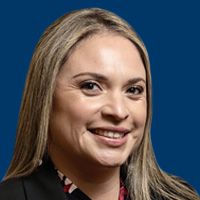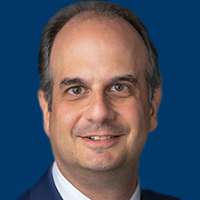Approaches to Treatment for Relapsed/Refractory ALL
Ibrahim Aldoss, MD and James K. McCloskey, MD describe treatment modalities that can be utilized in treating a pediatric or AYA patient with relapsed / refractory ALL.
EP: 1.Risk Assessment in ALL
EP: 2.Approaches to Treatment of Ph+ ALL
EP: 3.Treating Ph+ ALL: The GIMEMA Trial
EP: 4.Approaches to Treatment of Ph- ALL
EP: 5.Choosing a Treatment Setting for Patients With ALL
EP: 6.MRD Testing in ALL
EP: 7.Approaches to Treatment After Failure to Achieve MRD Negativity
EP: 8.Approaches to Treatment for Relapsed/Refractory ALL
EP: 9.Salvage Therapies in R/R ALL, Including CAR T-Cell Therapy
EP: 10.Sequencing Therapies in Relapsed/Refractory ALL
Ibrahim Aldoss, MD: Then, James, there are 2 studies recently published about the role of blinatumomab and relapse pediatric patients with ALL. Most patients treated in the MRD [minimal residual disease] setting for these. There is the study 20120215, and this one looked at patients who are children with high-risk First-Relapse B-Cell ALL. Do you mind just maybe commenting on this study briefly?
James K. McCloskey, MD: Sure. These studies - while we're both predominantly adult oncologists - they built on a foundation that already embrace, as an ALL community for adults. And that's that chemotherapy is not an acceptable salvage regimen any longer. And, in adults, we've demonstrated that both inotuzumab and blinatumomab improve outcomes as salvaged compared to chemotherapy. In these 2 studies that you referenced, attempted to look at the role of early implementation of blinatumomab for patients in First-Relapse, study 20120215 looks at the addition of blinatumomab for patients who even being more than being MRD-positive had residual disease. And it illustrated what we've seen in adults and it drove home some of the reasons that as a transplanter, if you're like us here at Hackensack, we look at blinatumomab as our standard regimen in preparation for transplant. Number 1, it was more effective, if we look at event-free survival, 31% compared to 57%, really high MRD-negativity rate, 90% compared to 50%, and lower severe-adverse event rate, which is, for us, especially as adult oncologists really - not only do you see it in the data, but you feel it. The experience of patients is quite different with something flag salvaged compared to blinatumomab, 57% severe-adverse event rate, and with blinatumomab compared to 82%. That really reflects our experience in patients with adult ALL [acute lymphoblastic leukemia]. The second COG trail you referenced look at, again, patients in First-Relapse, either with an earlier relapse or a late relapse that was MRD-positive. And these were folks who all got an initial cycle of chemotherapy, and those high-risk patients had to remain positive after initial chemotherapy salvage. Just to be clear, that was chemotherapy salvage induction, and then followed by either blinatumomab or chemotherapy as consolidation.
Transcript Edited for Clarity



